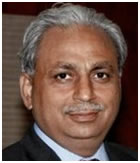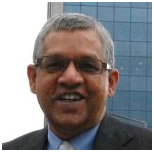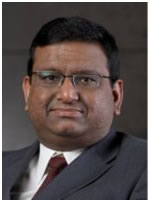
Financial Daily from THE HINDU group of publications
Monday, Apr 26, 2010
The top order changeth
eWorld tracks three companies staging a comeback through top-level management changes... |
Adith Charlie

I've had a lot of experience turning around troubled companies, and one of the first things I learned was that whatever hard or painful things you have to do, do them quickly and make sure everyone knows what you are doing and why”
| “Good strategies start with massive amounts of quantitative analysis, hard, difficult analysis that is blended with wisdom, insight and risk taking. Truly great companies lay out strategies that are believable and executable. Good strategies are long on detail and short on vision” |
| — Louis Gerstner, Jr, in Who says elephants can't dance. |
Most CEOs will tell you these are two of the most compelling lines written by the man responsible for IBM's dramatic turnaround from a cash haemorrhaging, overstaffed behemoth in 1992 to a nimble, market leader of software services in 2002.
Restructuring the company and making it more customer-focused were two of the key elements of IBM's transformation as articulated by Gerstner — an ‘outsider' who snapped the top job despite not being a technocrat.
 |
Back home, three companies that represent the country's IT services industry — Satyam Computer Services (or the rechristened Mahindra Satyam), Patni Computer Systems and Hexaware Technologies — have also been seeing change in top management and revamp, though not on the IBM scale.(Last year, the Mahindras made CP Gurnani Satyam's Chief Exectutive Officer and Vineet Nayyar, Chairman; Patni brought on board ex-Mphasis CEO, Jeya Kumar, in February 2009 while Hexaware saw PR Chandrasekar and Prateek Aggarwal taking over the CEO and CFO functions, respectively, in June 2008).
While all three companies had different reasons for inducting fresh blood, unlike Gerstner, the biggest challenge they faced was |
| C P Gurnani |
| the economic meltdown of last year and the cascading effect it had on customer propensity to spend on technology. |
eWorld tries to understand how these companies managed to survive the worst even as it does a ‘lynx-eyed' evaluation of the performance of the new management team. Playing catch-up
“Corporate transformations are really difficult and many fail to deliver sustainable improvements. Hexaware and Patni are at the beginning of a process. Both companies will need a lot more time to renew themselves and throughout this change process they will make mistakes,” says Peter Schumacher, founder, President and CEO of the US-based Value Leadership Group, a management consultancy firm.
 |
Established in 1978, Patni Computer Systems has been one of the pioneers of the IT offshoring model. The Indian IT industry went through a complete change in 1999-2000 and companies such as Infosys and TCS focussed on two major opportunity cycles: the Y2K bug and the ERP implementation wave. However, Patni did not capitalise on these prospects and has had to play catch-up ever since. After heading the company 31 years, Narendra Patni vacated the CEO's office in favour of Jeya Kumar. One of Kumar's foremost challenges was that of retaining employees.
As Sudin Apte, Principal Analyst of Forrester, puts it, Patni's problems were never due to service delivery issues or the lack |
| Jey Kumar |
| of competencies. Yet, customers were cagey because of high attrition of around 30 per cent and a highly risk-averse organisational culture. Kumar attributes the exceptionally high attrition rates to rumours of the Patni brothers exiting the company, which keep surfacing time and again. |
| |
 |
“I joined the company in February. I think one round of rumours probably started in September, the second one in October and then again last week. In 2008, it created a lot of uncertainty for our employees, customers and even to our shareholders. That was really a very difficult year,” says Kumar.
“Customers did come back to us in October and we did write to our promoters and they assured us that they weren't speaking with everyone.”
Moreover, the company's HR machinery, headed by Rajesh Padmanabhan, came up with innovative schemes such as the tie-up with 1to1help.net to offer free counselling services to Patni employees. The company is also working on an initiative |
| Prateek Aggarwal |
| wherein employees will also be able to rate the performance and the attitude of their immediate managers. |
These measures, coupled with last year's slowdown, seem to have paid off, with attrition returning to much normal levels of 13.7 per cent as of December end.
“Kumar has taken steps such as efficiency measures, stronger operational controls, new organisational models, new senior management and staff, and some offshoring specific measures, such as shifting more work offshore. The impact is visible — Patni exceeded analyst expectations and its stock has outperformed its peers since Kumar was appointed,” says Schumacher. The company stock has moved up from Rs 116 in February 2009 to Rs 561 as on April 21 this year.
“Growth rates at Patni can still be questioned…but they managed to hold fort through last year's downturn,” says Apte. The company managed to improve its gross margins to 37.9 per cent from 34.1 per cent in the quarter Kumar came on board.
Fighting revenue loss
Mid-size IT exporter Hexaware Technologies had a tough 2007 after the management discovered 11 unauthorised foreign exchange deals made on the company's behalf by one of the internal treasury employees. These deals, which were concealed from the management, caused the company losses to the tune of $25 million.
The employee was suspended immediately with official probe being initiated; some months down the line, the company's Chief Financial Officer, Rajesh Ghonasgi, and CEO, Rusi Brij, put in their papers.
The new management team comprising CEO, PR Chandrasekar, and CFO, Prateek Aggarwal, had the challenge of making up for the lost revenues and also strengthening corporate governance norms within the company.
So, did customers panic when news of the forex deals made headlines?
“Honestly, I did not get a single question from a customer on what happened on the forex front. Now, this could either be because the company clarified its position to customers in the six months before I joined or due to overall customer maturity,” says Aggarwal.
Apart from strengthening internal processes, the company also put in place key controls related to segregation of duty. It also increased focus on speeding up customer realisations. As a result, the company managed to improve its day sales outstanding (DSO) position to 56 as of December 2009 end from 68 in June 2008.
Hexaware also started furnishing details pertaining to the cash on its books for every quarter, along with information on how much cash is parked in each bank. This, according to Aggarwal, was a comforting factor for customers, especially after the Satyam episode came to light in January 2009.
However, the revenues that were wiped off due to the forex mess started pinching the company, more so when the business environment became negative. The company being a niche player focusing on specific sectors of financial services, travel and transportation and manufacturing, many areas of its business were prone to churn, admits Aggarwal.
During that period, Hexaware embarked on a drive to strengthen relationship with existing customers and farming them for incremental revenues. It tried to protect margins by freezing employee addition and through the creation of a virtual pool for unbilled employees, who were paid lesser than their billable counterparts. Thanks to the pick-up in demand for outsourcing, all the virtual benchers are now back on projects.
Hexaware's EBITDA improved to Rs 43.1 crore in December 2009, from Rs 17.6 crore as of June 2008. Gross margins moved to 43.1 per cent from 33.8 per cent.
So, what is the kind of advice analysts have for mid-size players such as Patni and Hexaware as they stare at the next levels of growth?
“These companies must realise that they do not have the scale to compete head-on with the larger players. Hence, super-specialisation is going to be paramount for them. Clearly cost arbitrage today is no longer a differentiation as every Indian player can provide it,” says Apte.
If these companies still want to create scale, they will have to become aggressive on the mergers and acquisition front, industry experts feel.
However, analysts are categoric in specifying that the challenges that Hexaware and Patni faced were unlike the mountain of problems that Satyam (or Mahindra Satyam) had to scale.
“At Hexaware and Patni, the boards' strategic intent was to improve the performance (and valuation) of these companies in a sustainable way by bringing in experienced new management.”
“Given the mixed performance record of these companies in the past, everyone saw the need for change.
So in contrast to the situation at Mahindra Satyam, the new CEOs at Hexaware and Patni have been implementing a classic performance improvement playbook,” says Schumacher. Mahindra Satyam, on the other hand, was at risk of imploding.
Covering a lot of ground
Reams of newsprint have been used up to chronicle the Satyam scandal, which came to light after the sensational disclosures made by ex-chairman, B Ramalinga Raju. What followed after the disclosures is something that left people with the ultimate question: Will the company survive?
For, the Hyderabad-based SAP specialist had come precariously close to running out of cash in February 2009. The need of the hour was for the company to be taken over by a buyer with deep pockets who could inject liquidity and also take care of the litigations against it.
All this had to be done quickly as customers were being poached by competitors left, right and centre.
After a process that ran for three months, the company finally had a new owner in the Mahindras. Soon after, the company rebranded itself as Mahindra Satyam and began a mission of re-assuring customers and employees. It also managed to get an out-of-court settlement with Upaid.
“Gurnani (Mahindra Satyam CEO) had the biggest challenge and he appears to have covered a lot of ground…given all the hype around Satyam, the cost of his failure would have been much more glaring,” says Apte.
Despite repeated attempts, eWorld could not get in touch with Gurnani as the company is currently in a silent period before its restated financials are made public June end.
“Overall, it looks like the new management has done an excellent job. Key employees and customers were retained. Now the challenge is shifting to getting the company back on road to sustainable performance and growth,” says Schumacher.
This transition, according to Schumacher, will not be an easy one as “many companies never recapture growth again after hitting a stall point like this”.
While Mahindra Satyam's management has dealt with several issues, its struggle is far from over. Court battles and class action suits filed by US investors, impending issues related to financial reporting, and competitive pressures are still unresolved.
Moreover, it is facing high attrition levels of over 20 per cent since the job market in India has opened up.
Its pre-occupation with survival issues, coupled with limited cash on hand, is preventing the firm from investing in next-generation IT services capabilities such as developing IP-based solutions, ramping up onshore and near-shore delivery centres, building platform-based managed services, and launching new software as a service or cloud-based offerings, feels Apte.
Some analysts agree that the stigma associated with the Satyam brand continues to haunt the company to some degree. The company is learned to have lost two key customer accounts — a leading publishing house and a US-based logistics services company — in the recent past largely because the customers have a policy of keeping away from scam-tainted entities. Though these firms did not cancel their contracts when the scam broke out, they refrained from extending the contracts when they expired.
Replacing ‘Satyam' from the company's name may be a good idea, say industry experts. However, the branding problem is expected to be taken care off as and when it decides to merge with parent Tech Mahindra.
Download Article Here in PDF format
Click here to email the author - Adith Charlie.
Copyright © 2010, The Hindu Business Line. |